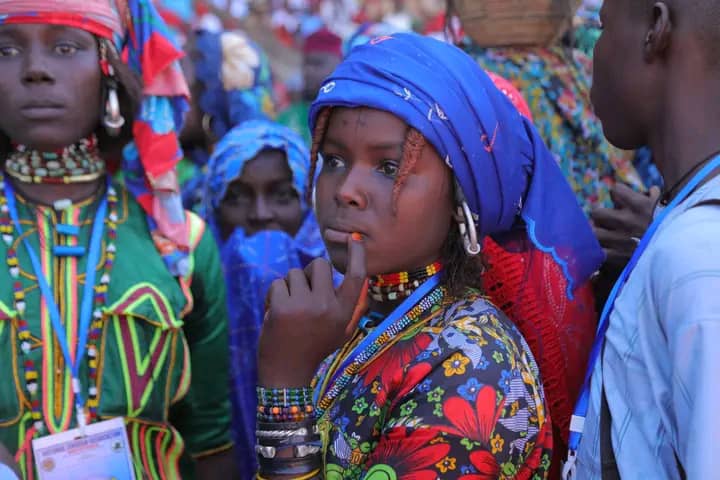Children under the age of five and pregnant women – especially those living in internally displaced camps – are most likely to suffer from severe malaria and could even die from what is a preventable and curable disease.
An estimated 76% of Nigerians are at risk of malaria because they live in high transmission areas.
In 2019 Nigeria accounted for 27% percent of malaria cases worldwide and the highest number of deaths, 24%, according to the 2020 World Malaria Report.
The World Health Organisation (WHO) said malaria killed 180,000 people annually in sub-Sahara Africa.
Mala Waziri, Borno State’s malaria programme manager in the ministry of health, told RNI reporter Fatima Grema Modu that the most vulnerable section of the population were children under the age of five and pregnant women, particularly those living in internally displaced camps.
He said recently there had been marked increase in the number of cases, mostly in children.
According to the 2020 WHO report, Waziri said, malaria was the leading disease affecting people in sub-Sahara Africa, 30% of whom were children. Of those who went to healthcare centres, 60% had malaria.
Waziri said the Borno State government was distributing mosquito nets – especially to pregnant women and children – to prevent them from infection.
In October, the WHO recommended the widespread use of the malaria vaccine, RTS,S/AS01 (RTS,S) – Mosquirix™ – for children in sub-Saharan Africa and in other regions with moderate to high spread of the disease from Plasmodium falciparum, the most deadly of malaria parasites. It is transmitted through the bite of a female Anopheles mosquito and causes the disease’s most dangerous form, falciparum malaria, which is the most severe and fatal malaria.
Waziri said although the government of Nigeria had approved the use of the vaccine, it had not received it.
He said Borno State statistics showed that from January to December 2020, 647,167 patients were tested for malaria; 512,673 were positive and more than 400,000 were treated.
Waziri warned families to take the utmost precautions to prevent malaria.
On Monday, December 6, the WHO published a report on malaria. It said although it was a life-threatening disease, it was preventable and curable. The organisation said in 2020, globally there were an estimated 241 million malaria cases and the estimated number of deaths stood at 627,000.
The WHO African Region carried a disproportionate share of the global malaria burden. Last year the region was home to 95% of malaria cases and 96% of malaria deaths.
Children under five accounted for an estimated 80% of all malaria deaths in the region.
The first symptoms – fever, headache and chills – usually appeared 10 to 15 days after the infective mosquito bite and might be mild and difficult to recognise as malaria. However, left untreated, Plasmodium falciparum malaria could progress to severe illness and death within 24 hours.
Four African countries accounted for more than half of all malaria deaths worldwide: Nigeria (31.9%), the Democratic Republic of the Congo (13.2%), United Republic of Tanzania (4.1%) and Mozambique (3.8%).
In the past two decades, expanded access to WHO-recommended malaria prevention tools and strategies – including effective vector control and the use of preventive antimalarial drugs – had helped to reduce the global burden of the disease.
The WHO said vector control was a vital component of malaria control and elimination strategies because it was highly effective in preventing infection and reducing disease transmission. The two core interventions were insecticide-treated nets (ITNs), particularly long-lasting insecticide treated nets (LLINs), and indoor residual spraying (IRS).
Since October 2021, the WHO had been recommending the broad use of the RTS,S malaria vaccine among children living in regions with moderate to high Plasmodium falciparum malaria transmission. The vaccine had shown to significantly reduce malaria, and deadly severe malaria, among young children.
Early diagnosis and treatment of malaria reduced disease, prevented deaths and contributed to reducing transmission.
The primary objective of treatment was to ensure the rapid and full elimination of Plasmodium parasites from a patient’s bloodstream to prevent an uncomplicated case of malaria from progressing to severe disease or death.








